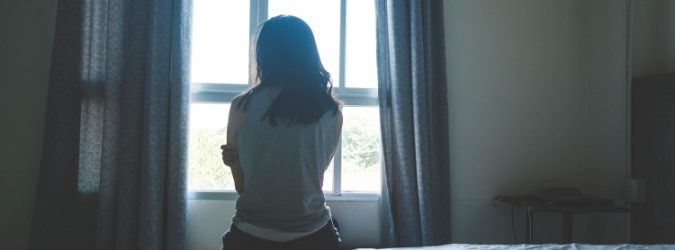Combating Human Trafficking: NYSBA Recommendations Become Law
12.2.2021
Few crimes in our country are as insidious and misunderstood as human trafficking. Frequently, when people think of human trafficking, they picture a scared young girl being abducted and held against her will and then forced into unspeakable situations. While this can be the case, the reality is that more commonly human trafficking situations are as subtle as they are tragic. In a system that commonly refers to the victims as “hidden in plain sight,” these individuals may not view themselves as victims at all due to manipulation and coercion, may simply think they are working off debt, or believe their situation is, in fact, a legal means to better themselves.
A young woman named Tonya developed a relationship with a man who soon became her trafficker. The relationship began casually and eventually turned romantic. As time went on, he asked her to have sex with other men to make some extra money. She recalls at the time being taken aback at first by the request and refusing, but eventually, “[h]e made me feel like I was doing it because I loved him and, in the end, we’d have a really good [financial] reward.”[1] She recalls feeling helpless, like she deserved what was happening, and really believing she was doing it for love. Eventually, Tonya was expected to have sex every night with different men.
Maria,[2] the sole financial support for her children, took a housekeeping job to provide for her family. Although the job was more hours than she expected and far less than minimum wage, she continued to work to support her family. Over several years, Maria’s employer restricted her movements, controlled whom she spoke with, referred to her as his “wife” while sexually abusing her, and regularly threatened to have her deported. Maria endured years of abusive behavior at the hands of her “employer” that left her feeling isolated and alone.
These stories demonstrate the complexities of human trafficking and underscore how traffickers can successfully exploit individuals in vulnerable positions, while remaining undetected by law enforcement. In 2007, lawmakers established the New York State Interagency Task Force on Human Trafficking to better understand and educate on human trafficking activity within the state, coordinate services for victims and law enforcement for perpetrators, and generally provide ongoing review and recommendations to policy changes. Since that time, New York State Bar Member Peggy Finerty has been appointed to the Task Force, and the Task Force has authored reports on the prevalence of human trafficking in the state. Using this information, the Task Force has worked diligently to educate front line workers on identifying victims and shepherding them to available supports.
In 2013, the New York State Bar Association also endeavored to learn more about trafficking within the state and made legislative recommendations to address this epidemic. The Special Committee on Human Trafficking offered a report[3] detailing many issues and loopholes within the legal system that failed to properly address human trafficking. The report called for lawmakers to enact legislation that further provided civil remedies to make victims whole and to stop the criminalization of victims. Though it took eight long years of negotiation and tireless advocacy, these recommendations finally became law this past legislative session. While some critics said enactment should have come years before, the final result was applauded, nonetheless.
Criminal Conviction Vacatur Law Expansion
In 2010, New York became the first state in the country to enact legislation allowing trafficking victims to vacate criminal convictions resulting from their trafficking. The law at the time only provided for vacatur of certain prostitution charges and other sex-related offenses. While sex trafficking is the most discussed form of human trafficking, the new law recognizes that the term is much boarder and cannot fit neatly into a box. Trafficking victims experience hells our readers cannot imagine, ones where committing a crime is not a choice but an act of survival.
In November, Governor Hochul signed into law legislation (S.674, Ramos/ A.459 Gottfried)[4] that expands the types of criminal convictions an individual may apply to have vacated. Victims of human trafficking can now make a motion for vacatur for any criminal conviction, if they can show at the time of the offense it was a result of their trafficked status. This new law moves away from the stereotypical view of human trafficking and reflects the realities that individuals are trafficked as children, labor, or for sex, and may be forced or manipulated to commit a variety of crimes at the direction of their captor. The expansion of these vacatur provisions will remove the unwarranted collateral consequences of criminal convictions and take steps to sever themselves from their traumatic past.
Civil Cause of Action for Human Trafficking Expansion
Lawmakers also expanded an existing private right of action to allow victims of human trafficking to sue their perpetrator in civil court. The bill (S.672, Sanders/A.3186, Hevesi)[5] expands the civil remedies available to an individual to include punitive damages and injunctive relief within the discretion of the court. The legislation also extends the statute of limitations to 15 years and contains several tolling provisions that considers the troubling dynamic between a trafficker and victim. The bill was signed into law in July and has been in effect since July 28, 2021.
An analysis done by the Association’s Special Committee on Human Trafficking found providing a civil right of action can provide individuals with distinct advantages over criminal recourse alone. A private right of action provides victims who have wrongly suffered with compensation that comes directly from the person who harmed them. This empowers victims and allows them to proceed with their case and story, even in circumstances where the state may not proceed with criminal charges. Moreover, allowing for punitive damages and injunctive relief sends a message directly to the traffickers that New York will not allow these actions, and they will not benefit from operating these “businesses” within our state.
The Association applauds the Legislature’s continued diligence and response to human trafficking within the state. January is Human Trafficking Awareness Month. As practitioners regularly interacting with the public, there are several resources[6] available to learn more about the signs of human trafficking victims may exhibit and the services currently available for those in need.
[1] https://www.ice.gov/features/human-trafficking-victim-shares-story.
[2] https://ips-dc.org/a-labor-trafficking-survivor-speaks-out/.
[3] https://nysba.org/app/uploads/2020/01/FINAL-Human-Trafficking-Report-with-Cover.pdf.
[4] https://www.nysenate.gov/legislation/bills/2021/S674.
[5] https://www.nysenate.gov/legislation/bills/2021/s672.
[6] https://otda.ny.gov/programs/bria/trafficking.asp.





